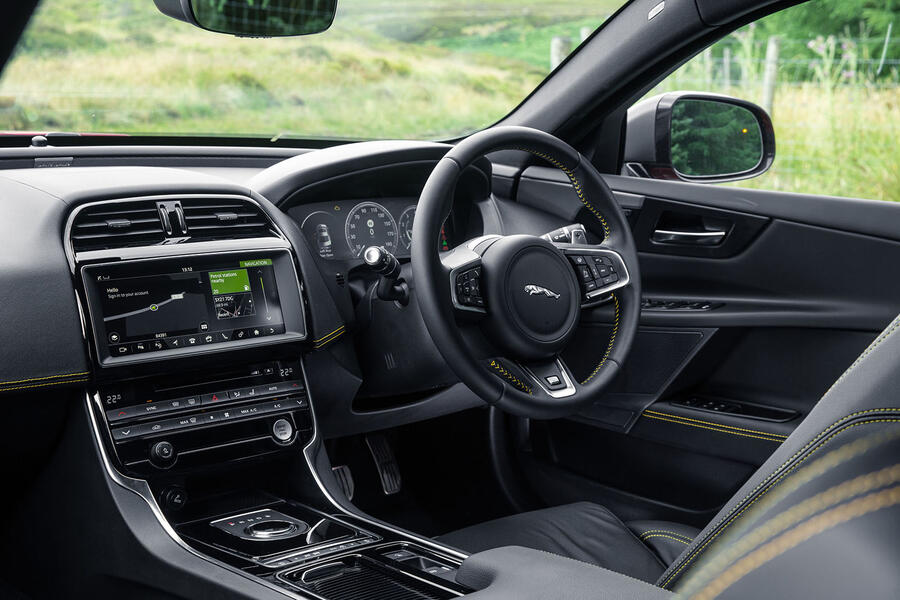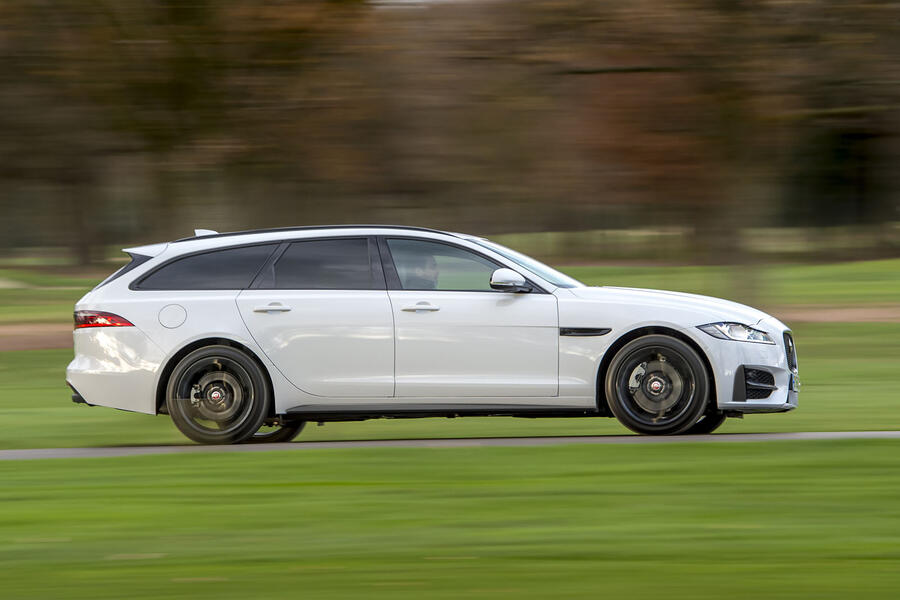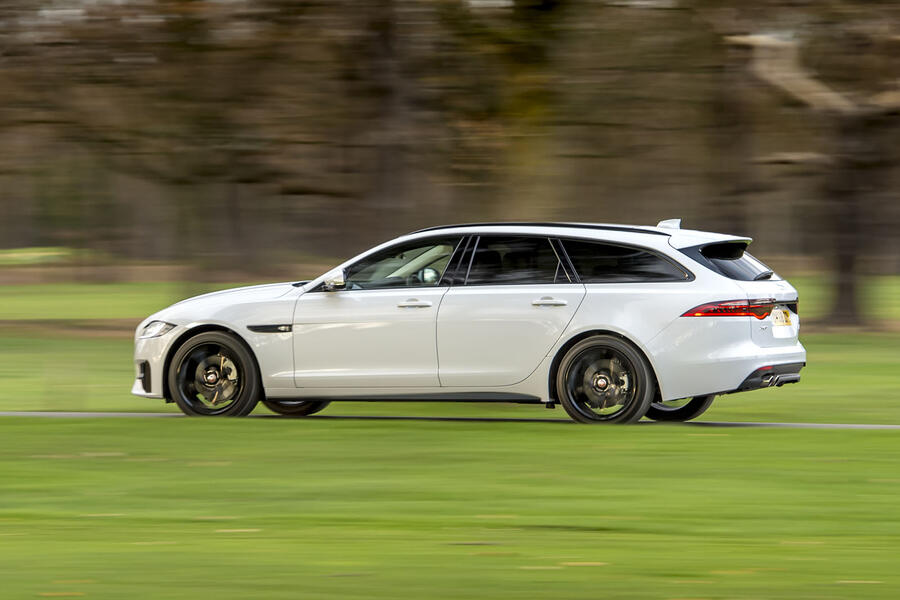The tractive benefits of four-wheel drive mean the XF Sportbrake really can shift. It rattles off the sprint to 62mph in 5.7sec, which is barely any slower than the F-Type. And if this engine feels a touch flat and asthmatic in the striking body of the coupé, in the Sportbrake its robust, satisfyingly torque-rich delivery better suits the utility brief. Through the all-important mid-range – overtaking territory – performance is just short of being conspicuously quick.
The eight-speed automatic gearbox isn't ZF's latest but is adequately refined for touring duties and quick enough whether or not you're using the stubby wheel-mounted paddles. Strangely, in this application it can't match the almost undetectable cog-swapping qualities the same hardware achieves in the G30 BMW 5 Series.
And in truth, the XF Sportbrake has never matched the powertrain efficiency of rivals from BMW, Mercedes and Audi – and that, to put it bluntly, is a good reason you don’t see many on the road. In this resepct, an indicated 32mpg on the motorway stretch of our test route is poor, and supports our suspicion the claimed 1763kg kerb weight is optimistic.
Next to the Germans, the Jaguar’s interior also feels antique, even with the 10.0in display of Jaguar’s Touch Pro infotainment system and a suedecloth rooflining now fitted as standard. The reinvented XJ due next year will need to do far better, but equally it will struggle to place its driver as sweetly behind the wheel. The Sportbrake’s seats aren’t much to look at, but so comfortable are they that you could settle into them for a day-long schlep and hardly feel it at the other end.
They're mounted atop a largely aluminium chassis that remains unchanged from before. That means double wishbones at the front and, because this is the estate XF, air springs and an integral-link arrangement at the rear. Jaguar has tuned this set-up very well indeed, and on its sports suspension the 300 is pretty exceptional in its ability to simultaneously isolate hotchpotch road surfaces and retain a sensation of contact with the road and tight vertical suspension control. It's something mid-engined supercars, with their softened front spring rates, do supernaturally well. Though far less sophisticated in this regard, the Jag achieves something of that ilk.
That composure lays the foundation for a high point in the car's dynamic repertoire. The electric steering will feel a touch too responsive for some but in terms of accuracy it has no equal in this class. It’s also beautifully weighted off-centre, thereafter accumulating heft in a linear fashion, and well synchronised with the car’s roll-rate. We should never underestimate the importance of good steering – for so many performance-car engineers it's the most important factor – and this Jag makes a virtue of changing direction.
The handling itself is subtle in its rearward balance, and on dry roads you're unlikely to tease the rear axle out of line. The Sportbrake is steadfast in its road-holding, predictable but fluid – exactly what you want for quick cross-country progress in horrid weather.

































Add your comment